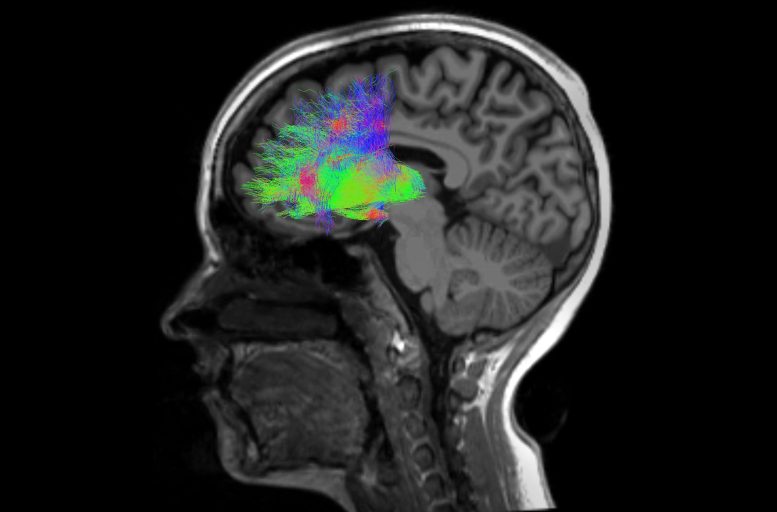

Researchers have identified a potential diagnostic tool for schizophrenia by measuring brain cell activity between the cerebral cortex and thalamus during uncertain tasks.
People with schizophrenia show distinct neural patterns when making decisions with conflicting information, a discovery that could help monitor treatment effectiveness.
Understanding Schizophrenia Through Brain Communication
For decades, scientists have understood that classic schizophrenia symptoms—like jumping to conclusions or struggling to adjust to new information—stem from communication issues between the cerebral cortex and the thalamus, often referred to as the brain’s “central switchboard.” Researchers from Tufts University School of Medicine and Vanderbilt University School of Medicine recently explored this further, measuring brain cell activity between these regions as participants completed ambiguous tasks. Their findings reveal that a person’s sensitivity to uncertainty could serve as a potential diagnostic tool for schizophrenia.
Published today (November 7) in Cell Reports Medicine, the study shows that people with schizophrenia display distinct neural patterns when making decisions based on conflicting information. This breakthrough offers one of the first biological tests to identify inflexible thinking, and by tracking changes in these neural patterns, it also provides a promising way to assess treatment effectiveness.
Aiming for a Biomarker for Executive Dysfunction
“Our goal was to derive a biomarker for executive dysfunction in schizophrenia, which only emerged when patients were taxed by an uncertain task,” says physician-scientist Michael Halassa, an associate professor of neuroscience and psychiatry at Tufts University School of Medicine who co-led the study with Neil Woodward, a neuropsychologist at Vanderbilt University School of Medicine. “We make decisions that are hierarchical in nature all the time as humans—meaning that we often need to account for misinformation at different levels—but this breaks down in schizophrenia and here is a way we can begin measuring that attribute.”
How the Brain “Votes” on Relevant Information
Over the course of evolution, the human brain has developed ways to “vote” on which bits of information are most relevant when making decisions. For example, if you go to your favorite restaurant but your meal isn’t the quality you’ve come to expect, you may think the chef is out or having a bad night, but it doesn’t prevent you from coming back. In contrast, a person with schizophrenia may be unable to consider the evidence that the past 20 or 30 visits were great and will no longer want to return to the restaurant.
Animal studies have shown that this behavior is driven by deficits in how the part of the forebrain that helps animals make sense of complex inputs (the dorsolateral prefrontal cortex) interfaces with a subcortical region associated with conflict resolution and decision making (the mediodorsal thalamus). Informed by the animal data, the research team developed a series of cognitive and imaging tests to better understand this neural circuitry in humans to establish more accurate diagnostics for patients.
Study Design and Observations on Neural Patterns
The scientists asked about 40 study participants—a mixture of neurotypical individuals and patients with schizophrenia—to correctly choose a target’s location based on a sequence of cues that can be made more or less conflicting. For healthy people, performance was very good even when the conflict was high. People with schizophrenia had comparable behavior to controls when there was little conflict, but they made many more errors with conflict levels that were tolerated well by controls.
Increased Susceptibility to Sensory Noise
“When you look at the behavior, there’s an increased susceptibility to sensory noise, so the patients with schizophrenia don’t do as well when things become more ambiguous,” said Anna Huang, a research assistant professor of psychiatry and behavioral sciences at Vanderbilt and co-first author of the study. “These results correlated with thalamus and frontal cortex deficits that we could capture in brain activity readouts, predicting a person’s ability to process conflicting information in perceptual as well as memory tasks.”
The researchers plan to validate their findings by replicating the methods with a wider range of subjects receiving brain scans as they process ambiguous cues. They also plan on administering hierarchical tasks to subjects, akin to the restaurant example above. The study is part of a wider research initiative the Halassa Lab is pursuing to link neural activity to data that can be interpreted for clinical benefit.
Reference: “A prefrontal thalamocortical readout for conflict-related executive dysfunction in schizophrenia” 7 November 2024, Cell Reports Medicine.
DOI: 10.1016/j.xcrm.2024.101802
Also contributing to this study were Ralf Wimmer, research assistant professor of neuroscience and co-first author, and Norman Lam, postdoctoral fellow, from Tufts University School of Medicine, as well as Sahil Suresh, a student in the MD/PhD Medical Scientist Training Program at Tufts University School of Medicine and the Graduate School of Biomedical Sciences at Tufts University.
Complete information on authors, funders, methodology, and conflicts of interest is available in the published paper. The content is solely the responsibility of the authors and does not necessarily represent the official views of the funders.